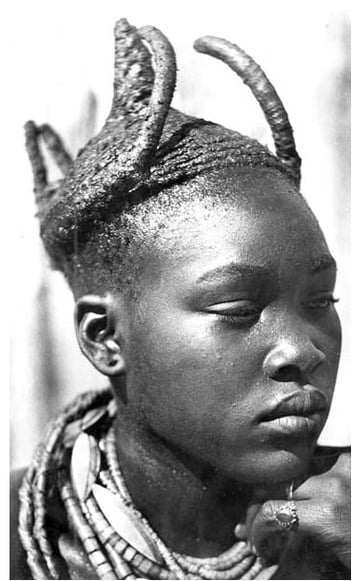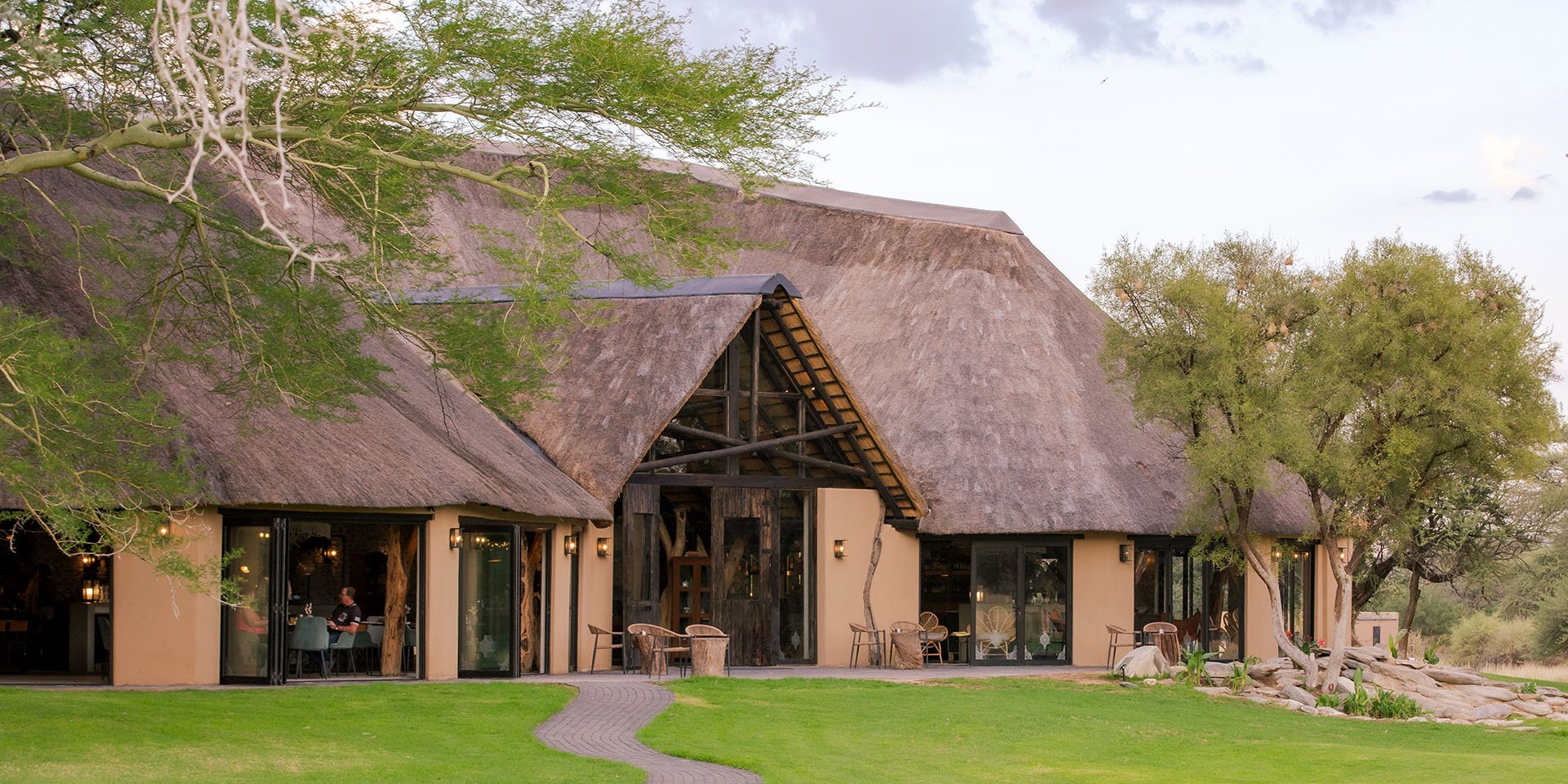The OvaKwanyama comprise the largest population group among the OvaWambo and their traditional home is northern Namibia and southern Angola. Up to the 1950s the hairstyles and headdresses, which formed part of women’s garments since times immemorial were still widely found. During a journey undertaken by a foreigner it so happened that a local guide exclaimed in amazement: "See, here we have a Kwanyama-woman, who is on a visit in the Ondonga-area!" He was able to identify her exact origin merely by looking at her headdress. As a result of increasing acculturation, which eventually also reached the northern parts of the country, the traditional headdresses disappeared and today they are only occasionally worn as wigs during ceremonial occasions.
The hairstyles and headdresses worn by girls and women were closely related to their social position and status within the community. As from the age of twelve years, the hair of girls was prepared for later headdresses. A mixture of fat and finely crushed pieces of root (olukula) of the Transvaal Teak, which gave the mixture a red colour, was applied to girls’ heads. Several years later this procedure was repeated and leaf fibers of Sansevieria and additional hair were attached to the hair. The headdress, which was known as elende, was decorated with cowrie shells and rubbed with the red olukula-mixture and formed a broad, tail-shaped end behind the neck.
As soon as the girls reached marriageable age, they were called ovafuko and were entitled to participate in the efundula initiation rite. This ceremony was a combination of puberty rite and group marriage ceremony and had been eagerly awaited by the girls for a long time. Formerly the efundula took place every three to four years if there were enough daughters from royal families together. Today it is only celebrated on rare occasions. The ceremony lasted for four days and served the function to prepare the girls for the hardness of their lives. Part of the requirements, which the girls had to endure, was the participation in dancing, which continued for nights and days at the sound of drums played by men.
Directly after the efundula the girls were exposed to a field school, which lasted for eight weeks. During this period the girls were forced to fend for themselves but they also had considerable privileges. In preparation for the field school older women supplied each girl with an omhatela-headdress, which was made from the leaf fibers of the Sansevieria plant and additional hair and was covered with the red mixture of fat and olukula. The manufacture of the omhatela-headdress was linked to a considerable degree of exhaustion as it was normally done in the blazing sun and served as additional endurance test for the girls.
The omhatela was characterized by five horn-like points, of which the front three symbolized a bull, while the two horns positioned at the back implicated a cow. In addition, the girls covered their body with ash, which made them known as "ash girls" or "white creatures" (oihanangolo). Their outfit consisted of a wrap attached to the neck, which was made of aloe stems, while their skirts consisted of leaf fibers of the Sansevieria plant. Well equipped with clubs and sticks they were free to beat any passer-by and especially men had to be on the alert. At the end of their field school, the oihanangolo were cleaned and their bridegrooms were allowed access.
As a sign that they had reached married status, the young women continued wearing the omhatela-headdress. When it became unattractive in later times, it was replaced by a new one or simply discarded. If a widow or divorced woman re-married, she also wore the omhatela, which was characterized by the two rear horns being connected by a horizontal stave. She was no longer subjected to any ceremonial obligations.
Formerly OvaKwanyama women made a striking appearance by wearing their omhatela-headdresses, their long skirts of ox hide, the corsets of dark-blue glass beads and ivory buttons, which were attached to leather straps and worn over their backs, necklaces and copper leg rings.







SUBMIT YOUR COMMENT